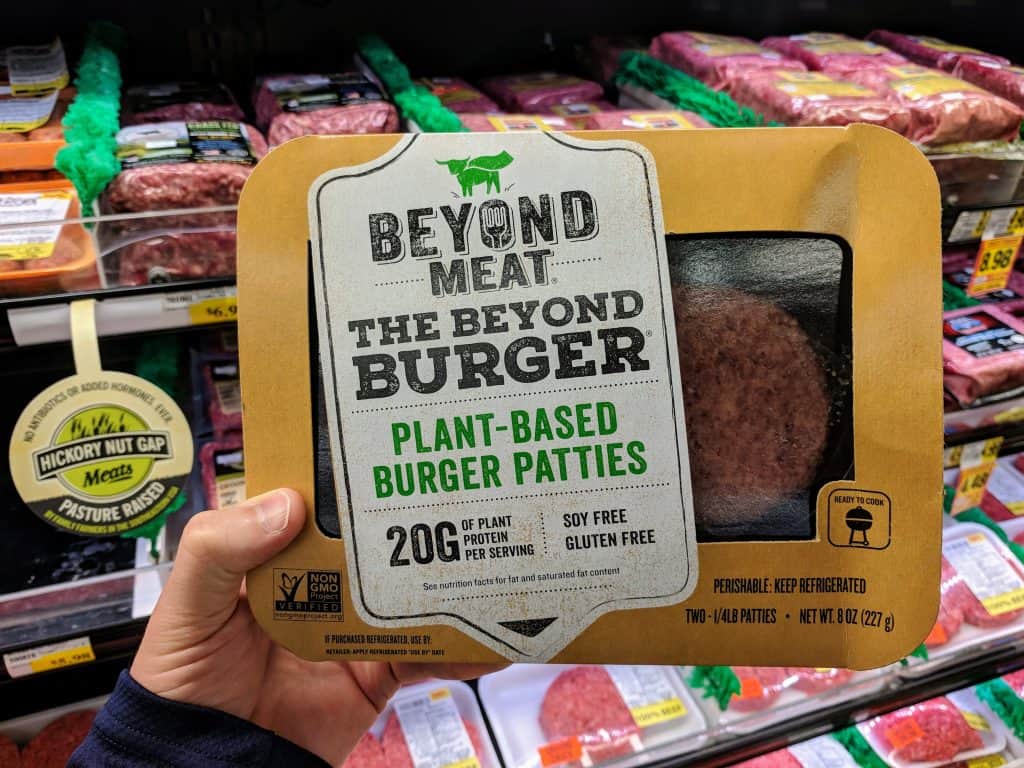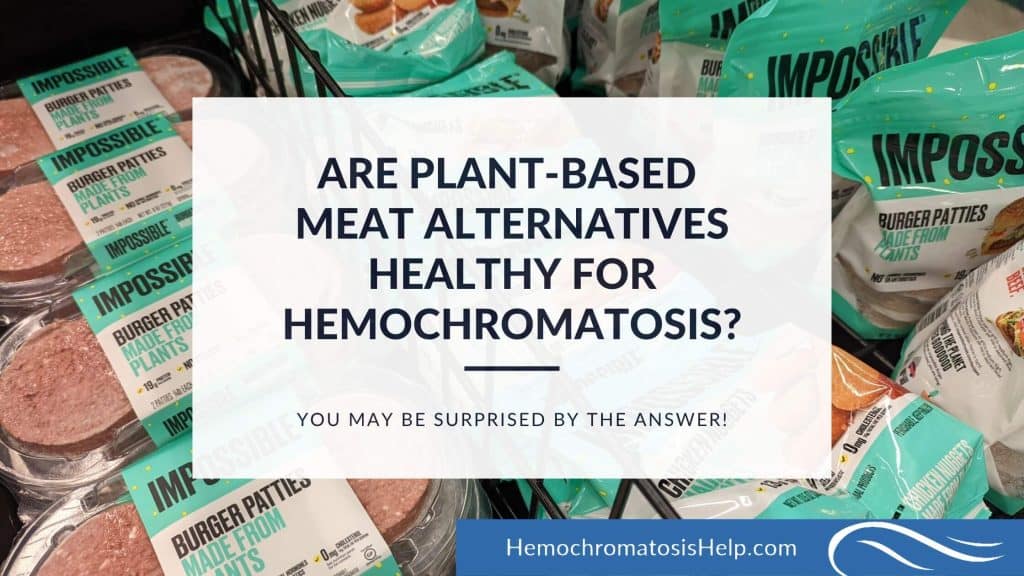“To beef, or not to beef: that is the question:
Whether ’tis nobler in the mind to suffer
The slings and arrows of outrageous fortune,
Or to take arms against a sea of ferrous iron,
And by opposing end them with phlebotomy?”

— Quote from Dr. Eric’s made-up, alternative-attempt-at-humor version of the story where Hamlet was diagnosed with hemochromatosis and went mad due to iron overload in his nervous system (not totally unreasonable as many Danish men have the genes for hemochromatosis lol)
Prince Hamlet probably didn’t actually worry about his dietary iron intake, but those of us with a genetic predisposition to hemochromatosis do often concern ourselves with iron in our diet.
We have heard from many of our readers with questions about meat intake in general, and red meat intake in particular.
In This Article
Should I Be A Vegetarian?
In one of our most well-read newsletters, we asked the question, “Should I Be a Vegetarian?” In this article, we detailed the pros and cons of including meat in a hemochromatosis diet.
We concluded:
“You can be if you want to be. And you don’t have to be if you don’t want to be. It’s all about understanding the iron in your food and using that knowledge to your own empowerment!”
Whether you choose to be a vegetarian or if you include animal proteins in your diet, we like to emphasize the importance of understanding the iron in your food.
With that in mind, we wanted to share our thoughts with you on a related question we are frequently asked about alternative meats like the Impossible™ Burger.
FAQs About Plant-Based Meat Alternatives
Here are several reader questions we’ve received:
- The ingredients in the new “Impossible Burger” include Heme. Is this the same as the Heme in red meat that is so harmful to us?
- I’d like to ask that you look into this new fad of plant based protein foods such as Burger King’s Impossible Burgers, KFC’s plant based chicken fast food items and certain frozen foods touted as a “healthy alternative” to beef. If you read the labels on these products, they may be extremely misleading to those of us with Hemochromatosis because of the high iron content.
- Since the makers of Impossible use heme to give it that red color and make it turn brown as it cooks, does that mean animal heme iron is present? In other words, is it a safe alternative for a person with hemochromatosis?
Surprising Answers
All excellent questions!
In addition to researching this topic, I went to my local grocery store to read the ingredient labels… and needless to say, I was very surprised at what I found!
Here are the front and back labels of the Impossible™ Burger, followed by the Beyond Meat Burger labels:
Impossible™ Burger Label


Beyond Meat Burger Label


Grass Fed Ground Beef Label
In comparison, here is the nutrition label of lean Grass Fed, Ground Beef (90/10) from a wonderful local resource in my area: Hickory Nut Gap Farms (Asheville, NC)

As you can see, the lean grass fed ground beef contains 15% of the RDA for iron, which comes out to 2.7 mg of iron per serving.
By comparison, the Impossible™ Burger contains 25% of the RDA with 4.2 mg of iron per serving and the Beyond Burger contains 30% of the RDA with 5.4 mg of iron per serving.
Talk about an unexpected result — that’s literally twice the amount of iron in the plant-based product!
Furthermore, I was also surprised by the total fat content and the saturated fat content in the alternative meats. Granted the Hickory Nut Gap Farms meat is their 90/10 lean beef, but overall it had lower levels of iron, total fat, and saturated fat.
What are the Ingredients of Plant-Based Meat Alternatives?
As for the ingredients of the alternative meats, each company has different ingredients and recipes for their products, so it’s difficult to make sweeping generalizations.
The Beyond Burger is made from a Pea Protein Isolate. A number of manufacturers use a similar approach with their ingredients.
The Impossible™ Burger, on the other hand, takes a novel approach and utilizes a soy protein concentrate. What makes this brand’s approach unique is that they state their product’s realistic flavor comes from the inclusion of “heme.” Their website states:
Flavor from heme (the molecule that makes meat taste, well, meaty)
From the company’s website, the heme in the Impossible™ Burger is derived from a component in soy called “Leghemoglobin” (from this article).
According to the manufacturers of the Impossible™ Burger, they use genetic modification strategies to extract this form of heme from soy. It is said that the flavor of animal meat comes from heme, therefore this ingredient is what makes their product taste like meat.
So the ingredient looks very similar to heme from animal meats.
Without seeing a side-by-side comparison in a chemistry lab, I am not sure if it is the exact same molecule, but it does seem to at least be very close.
Conclusion: Should you Eat Plant-Based Alternative Meats in Hemochromatosis?
From an iron overload perspective, this would seem to indicate that the Impossible™ Burger would be a source of highly absorbed iron… which is not good for us!
One small caveat, that my wife discusses in the chapter on legumes in her Hemochromatosis Cookbook, is that soy protein does serve to reduce iron absorption from a meal.
Nonetheless, the Impossible™ Burger contains a very significant amount of highly absorbed iron.
As a result, we would recommend that you be very careful about consuming these type of meat alternatives – whether you choose to eat animal proteins in your diet or if you prefer a vegetarian diet.
Yet another reason for the importance of understanding the iron in your food and using that knowledge to your own empowerment!
In this case of regular meat vs. alternative meat, the answer may be better to beef than not to beef.
Impossible Foods Website:
- https://faq.impossiblefoods.com/hc/en-us/articles/360019100553-What-is-soy-leghemoglobin-or-heme-
- https://faq.impossiblefoods.com/hc/en-us/articles/360034767354-How-do-you-make-heme-
- https://faq.impossiblefoods.com/hc/en-us/articles/360019100153-How-do-I-know-plant-based-heme-is-safe-
- https://faq.impossiblefoods.com/hc/en-us/articles/360018939274-What-are-the-nutrition-facts-for-Impossible-Burger-
- https://faq.impossiblefoods.com/hc/en-us/articles/360018937494
Palle Pedersen, Nils Milman. Genetic screening for hemochromatosis in 6,020 Danish men: penetrance of C282Y, H63D, and S65C variants. Annals of Hematology, Springer Verlag, 2009, 88 (8), pp.775-784. https://hal.archives-ouvertes.fr/hal-00535020/document
“In conclusion, this study demonstrates a high penetrance of the C282Y variant in Danish men followed by the H63D variant”
Good Reads, “To Be, Or Not To Be”: https://www.goodreads.com/quotes/36560-to-be-or-not-to-be-that-is-the-question
Related Articles & Links:
- What to Eat When You Have Hemochromatosis
- Heme Iron vs. Non-Heme Iron in Food
- Using Nutritional Supplements in Hemochromatosis
- Supplements Created for the Hemochromatosis Patient
- Benefits of Quercetin in Hemochromatosis
- Benefits of Resveratrol in Hemochromatosis
- Benefits of Milk Thistle in Hemochromatosis
- Benefits of Green Tea in Hemochromatosis
- Benefits of Calcium in Hemochromatosis
Professional Quality Supplements Hand-Picked by the Naturopathic Doctors at Hemochromatosis Help.







